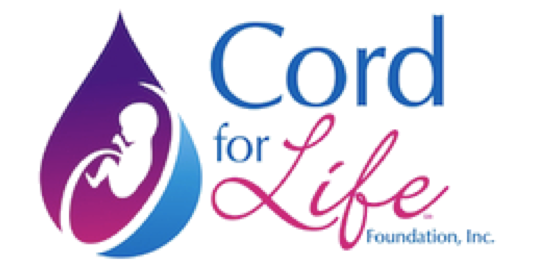Located in Altamonte Springs, Cord For Life® Inc. is a local umbilical cord blood bank that specializes in public and private stem cell processing and cryopreservation. Cord For Life® has operated in the Central Florida area since 1993, and to date has processed over 15,000 cord blood units from across the United States. In addition to collecting, processing and banking umbilical cord blood stem cells, the company provides consulting services to help organizations develop and operate high-quality cord blood banks, and offers educational training programs for healthcare professionals.
Recently, Cord For Life® launched its cord blood banking program. Under this program private clients can store their baby’s cord blood stem cells (CBSC) for future needs or moms-to-be can donate their baby’s cord blood to the general public through the National Marrow Donor Program’s (NMDP) Be The Match® Registry. Public donation, which has no cost to the donor, makes CBSC available to anyone in the world in need of a stem cell transplant to treat over 75 diseases.
The Cord For Life® program utilizes a revolutionary new processing system, branded as PREMIERMAX®, which significantly reduces red cell contamination in the transplant product while recovering an equal or higher number of stem cells (when compared to other automated and traditional methods). PREMIERMAX® also reduces the level of DMSO required to adequately preserve the cells during the freezing process, thereby reducing potential recipient exposure to this sometimes toxic cryoprotectant.
PREMIERMAX® uses 2 unique reagents combined with individual unit Quality Control by highly trained technicians, to produce a superior final transplantation product. The processing reagent is PrepaCyte®-CB, which demonstrates an unrivaled ability to remove red blood cells over any other method on the market today. Red cell reduction reduces the amount of free hemoglobin in the thawed product infused to the recipient, thereby increasing the safety of the infused product. Additionally, PrepaCyte®-CB has shown in clinical trial and independent evaluation to increase the final stem cell population recovered, most significantly in the post-thaw colony forming assay which indicates functionality of the stem cells for engraftment.
The second key reagent in PREMIERMAX® is the freeze media, CryoStor® CS10. CryoStor is specifically designed to protect cells at ultra-low temp e r a t u r e s , unlike traditional cryopreservation reagents. This results in improved cellular transition through phase change from a liquid blood product to the frozen state for long-term storage, and again during thawing prior to infusion. During our validation of CryoStor® CS10, it was demonstrated that a less concentrated amount of the cryoprotectant reagent DMSO could be used in the freezing process while maintaining acceptable cellular functionality post-thaw.
The most important aspect of any change in status quo is the resulting effect of the change. Historically, the lower stem cell dose of a CBSC product when compared to a bone marrow or peripheral blood stem cell collection resulted in a longer time for bone marrow reconstitution (or engraftment). This led to early beliefs that CBSC could only be useful for pediatric patients or small adults. It was also realized that CBSC would typically result in longer periods of non-immunity, resulting in longer hospital stays for the recipient, even though GvHD is typically reduced.
Current data from over 20,000 CBSC transplants worldwide, shows an average time to PMN engraftment (PMN cell count >500 for 2+ days) is 25-27 days. In fact, our own historical data shows a comparable average PMN engraftment time of 21 days for units processed before our change to PremierMax-CBSM. Following our change in processing method, we are currently seeing an average time to PMN engraftment of only 11.33 days. Even more exciting is that independent data from another NMDP member cord blood bank that also uses PrepaCyte®-CB as it’s processing reagent mirrors our data from Cord For Life® (poster abstract to be published at AABB Annual Meeting 22-25 Oct., 2011).
As you can appreciate, a nearly 10 day reduction in the length of hospital stay, especially for a critically ill patient with no immune function, is highly significant. Having a readily available stem cell source product that can rival the engraftment time of marrow or peripheral blood sources, with a reduced risk of GvHD, and a significantly increased HLA-matching potential would create a major shift in the paradigm. Cord blood products have already begun to outpace marrow as a source for stem cell transplantation. With significant results such as these and new, exciting therapies being developed worldwide, the usefulness of cord blood stem cells will only increase over time. As more and more PREMIERMAX® processed CBSC units are transplanted worldwide, Cord For Life® will continue to monitor and analyze the engraftment data. A 2-site joint publication is expected in 2011 to further analyze the significance of the findings over a broader range of CBSC units, diseases, and transplant centers to eliminate other possible factors for the decreased engraftment time. We feel this finding could create a new excitement in the cord blood transplantation industry and provide a remarkable benefit to patients in need of life saving stem cell transplants.
By Donald Hudspeth, BS(CLS), MT(ASCP) and Sara Irrgang, MD, FCAP, FLORIDA MD, September 2011 Edition, pgs 33-34





